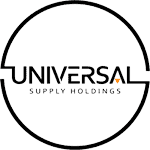Rexline and Rubber Wear Protection?
Rubber Wear Protection refers to the use of rubber materials to protect surfaces or components from wear and tear caused by friction, impact, and other forms of mechanical stress.
It is often used in various industries and applications, such as automotive, construction, mining, and others, to extend the lifespan of equipment and reduce maintenance costs.
What types of rubber wear protection are most common?
The most common types of rubber wear protection include:
- Rubber Liners: Used to line the inner surfaces of pipes, chutes, hoppers, and other equipment to reduce abrasion and impact damage.
- Rubber Sheets: Used as a protective covering on flooring, work surfaces, and conveyor belts.
- Rubber Mats: Used to protect floors and surfaces from impact, abrasion, and spills.
- Rubber Skirtboard: Used to line the sides of conveyor belts to prevent material spillage and protect the belt from damage.
- Rubber Bumpers: Used as shock absorbers and impact protectors on machinery and equipment.
These are some of the most commonly used types of rubber wear protection. The choice of rubber material and design will depend on the specific application and the level of protection required.
What questions are commonly asked about rubber protection?
Here are some common questions asked about rubber protection:
- What are the benefits of using rubber for wear protection?
- What types of rubber materials are best for wear protection?
- How do I select the right rubber wear protection for my application?
- What is the lifespan of rubber wear protection?
- How do I install rubber wear protection?
- How do I maintain and clean rubber wear protection?
- Are there any special considerations for using rubber wear protection in specific environments?
- Can rubber wear protection be used in high-temperature applications?
- What is the cost of rubber wear protection compared to other materials?
- Are there any environmental concerns with using rubber wear protection?
These are some of the questions that are commonly asked about rubber protection.
The answers to these questions will depend on the specific application and the type of rubber wear protection being used.
Talk to the team at Rexline who will be happy to answer these questions and more
Are there quality differences in the types of rubber used for rubber wear protection?
Yes, there are quality differences in the types of rubber used for rubber wear protection. The quality of the rubber used can affect its durability, resistance to wear and tear, and overall performance.
There are different grades of rubber, each with its own set of properties and characteristics. Some common types of rubber used for wear protection include natural rubber, neoprene, nitrile, and silicone. Each type of rubber has its own strengths and weaknesses, making it more suitable for certain applications than others.
For example, natural rubber is known for its excellent elasticity and abrasion resistance, making it suitable for applications that require flexibility and durability. Neoprene is a synthetic rubber known for its oil and chemical resistance, making it a good choice for applications in harsh environments.
In addition to the type of rubber, the quality of the manufacturing process and the materials used in the production of the rubber can also affect its performance and durability. To ensure the best performance and longevity, it is important to select a high-quality rubber product that is specifically designed and tested for the intended application.
Talk to Rexline if you have questions about your wear protection requirements. We provide rubber wear solutions across Australia to mining, industrial, marine, automotive, manufacturing, and agricultural industries.

